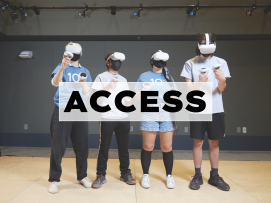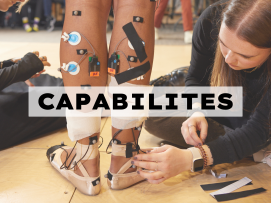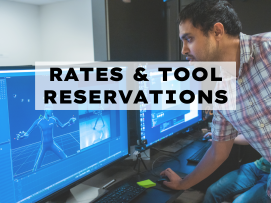Located on the third floor of MIT.nano (12-3207), the lab is an open-access research space. Professors, students, and researchers from any department may use our tools to pursue their interests. Outside academic users, members of the MIT.nano Consortium, and members of industry may also access the lab.
Our mission
The Immersion Lab's purpose is to propel research and education at MIT by:
- Providing the campus with an array of cutting-edge technologies to facilitate immersive experiences and the display and interaction with 3D, 4D, and other large data sets;
- Broadening interdisciplinary interest in immersive technologies at MIT and promoting collaborations across art, science, and technology;
- Supporting teaching in enhanced reality and mentoring MIT community members seeking to realize their projects using our facility;
- Bridging the domains of hardware and software—and encouraging cycles in which advances in one domain spark innovation in the other;
- Fueling experimentation and research in enhanced reality technologies through seed grants, shared equipment, symposia, and other resources;
- Adapting to evolving user needs and technological advancements.
Our first formal program is the MIT.nano Immersion Lab Gaming Program, in collaboration with NCSOFT, a founding member of the MIT.nano Consortium.
Our monthly seminar series, IMMERSED, is a mixture of lectures, demonstrations, and tutorials that explore how immersive technology and new modalities for manipulating and understanding data are shaping innovations across science, engineering, and art. See the schedule.
>>Sign up for our mailing list.



